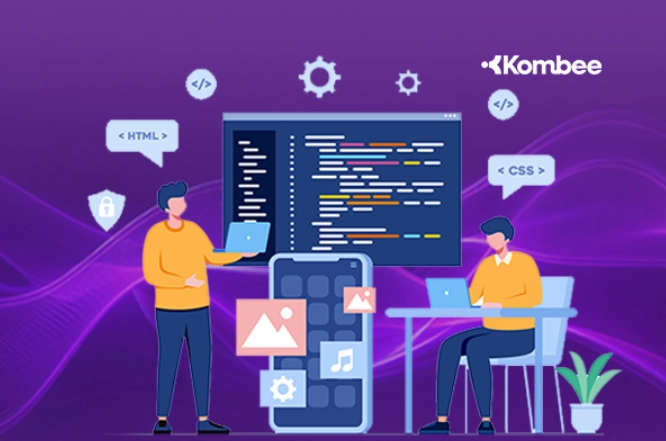Introduction
Are you aware know 90% of organisations experienced identity incidents during the previous year? And it’s not just tech startups, even global brands aren’t immune. Victoria’s Secret recently had to take down its website and in-store services due to a security incident. While details are still yet to be known, the disruption highlights how authentication failures or breaches can cause business-wide outages and erode customer trust.
Poor access control and weak authentication expose your systems to serious vulnerabilities. If you're aiming to build secure web apps, then treating secure web application development as a core part of your strategy is non-negotiable. It’s the only way to ensure long-term user trust and operational stability.
This blog discusses the 5 best practices to enhance your web app authentication and application software security.
How Can You Secure Your Web Application with Authentication and Authorisation?

Protecting your web application begins with having complete control over authentication and authorisation. Both these pillars guarantee that only the correct users get access to the proper resources, safeguarding your business from breaches.
1. Employ Strong and Modern Web App Authentication Methods
Web app authentication is the initial gate that guards your users, and fragile gates are simple to breach.
If your app is still username and password only, you're not safe. Passwords can be guessed, reused, stolen, or cracked. That’s why using modern authentication methods for web applications is critical. Today’s web authentication software must go beyond traditional logins to offer layered security. From MFA to passwordless and biometrics, these are now baseline requirements for secure website authentication in any serious platform.
Here's what you should be doing:
- Multi-Factor Authentication (MFA): Uses something the user knows (password) and something they have (code or device) or something they are (fingerprint or face scan).
- Social login or OAuth 2.0: Allows users to sign in securely by relying on trusted providers such as Google or Apple. It transfers some of your security burden to providers with sophisticated infrastructure.
- Passwordless authentication: Email magic links, push notifications, or biometrics eliminate passwords, improving application software security and user experience.
This practice minimises friction and decreases your chances of violating something every contemporary custom web app development project should never overlook.
Pro Tip: Adopt Continuous Authentication where user behavior is constantly analysed (like typing speed, location, or device fingerprinting) to detect suspicious activity even after login.
2. Incorporate Role-Based Access Control (RBAC)
After a user logs in, they shouldn't be able to see everything.
That's where authorisation is involved. You must limit what users can and cannot perform within your application. RBAC allows you to do so successfully.
How RBAC works:
- Assign roles (admin, editor, viewer, customer, etc.)
- Define permission for every role
- Implement access rules in your interfaces, APIs, and backends
For instance:
- A customer can see their orders.
- A moderator can handle reviews but not billing.
- An admin can see system-wide settings and data.
RBAC avoids privilege abuse and keeps exposure minimal if an account is compromised. It’s also scalable and easy to audit — making it a key step in building secure web applications that align with compliance and user protection standards.
Pro Tip: Move toward a Zero Trust model where access isn’t just based on roles but validated continuously based on the context (e.g., device health, geolocation, request behavior).
3. Implement Secure Token-Based Authentication
Tokens such as JWTs are now the gold standard for secure web authentication — especially in API-first architectures and modern cloud-based systems.
Compared to session cookies or traditional sessions, tokens are:
- Stateless: No session data on the server is required
- Portable: Can work across services, mobile devices, and APIs
- Secure: If they are done correctly
Best practices for token-based authentication:
- Employ short-lived access tokens (e.g., 15 minutes) and refresh tokens (to avoid re-authentication for keeping logged in).
- Store tokens in HTTP-only, secure cookies to avoid cross-site scripting (XSS) attacks.
- Don't store tokens in localStorage or URLs, which are easily reachable for attackers.
Also, use OAuth 2.0 and OpenID Connect for industry-standard, secure delegated authentication, particularly if you provide third-party access to your app.
Pro Tip: Use confidential computing to protect token management or sensitive authentication logic on the server, even in shared or cloud environments.
4. Validate and Sanitise All User Inputs
Despite excellent authentication and role controls, attackers can defeat your security entirely if your app accepts malicious input.
One of the longest-standing but most perilous web threats is injection attacks, such as SQL or command injection. Such attacks can reveal sensitive information or hijack your app.
Guard yourself with these measures:
- Validate input always on the server, never rely on client-side validation alone.
- Sanitise and escape inputs, particularly in database queries or HTML templates.
- Apply tried and tested libraries for input sanitisation and validation (e.g., Joi for Node.js, Django forms, or Laravel validation).
- Implement centralised error handling to prevent exposing system information in error messages.
These practices are among the essential web app security best practices and should be baked into every sprint cycle and code review.
Pro Tip: Add Content Security Policy (CSP) to help prevent unauthorised scripts from running andHTTP Strict Transport Security (HSTS) to ensure that browsers only connect over HTTPS, protecting against downgrade attacks.
5. Audit, Monitor, and Regularly Update Your Security
Security isn't a one-time thing. It's continuous.
To have strong web application security, you need to monitor your system regularly and act quickly if there's something wrong.
This is what that looks like in reality:
- Run penetration tests at least once a quarter.
- Utilise tools such as OWASP ZAP, Burp Suite, or CI/CD automated scanners to find vulnerabilities early.
- Log every login request, failed access, and permissions modification then watch those logs.
- Use rate limiting and IP blocking to stop brute-force login attempts.
- Keep your frameworks, auth libraries, and dependencies current to avoid known exploits.
And don't forget: every custom web application development team should have a response plan. If a token is leaked, can you terminate it? Do you have a plan to notify users if there is a breach?
Preparation here saves reputations later.
Pro Tip: Use automated dependency scanners like Snyk or npm audit to catch known vulnerabilities and monitor for leaked tokens or secrets with a plan to revoke and rotate them immediately.
How Your Businesses Can Get Started with Web App Security?
When it comes to securing web applications, the first step is understanding how to secure web applications through solid authentication and authorization policies. It includes implementing:
- Strong Authentication: Make sure users use strong passwords and preferably multi-factor authentication (MFA) in order to introduce an additional layer of security.
- Role-Based Access Control (RBAC): Grant permissions according to user roles to limit the access to sensitive data so that users can only perform actions appropriate to their roles.
Secondly, companies should have secure coding practices in place to prevent their web applications from known security flaws:
- Input Validation: Validly validate all user input to prevent attacks such as SQL injection as well as cross-site scripting (XSS).
- Data Encryption: Encrypt sensitive data in transit (use HTTPS) and at rest to keep it secure against unauthorised access.
- Regular Security Testing: It involves penetration testing and vulnerability scanning to find and correct potential security vulnerabilities in the code.
Last but not least, companies need to have regular security monitoring and audits to keep
themselves ready for new threats:
- Regular Security Audits: Regular auditing and updating security practices to keep up with latest threats.
- Proactive Monitoring: Utilise security monitoring tools to identify suspicious activity and react rapidly to any intrusion.
By doing this, companies can lay a foundation for web application security, safeguarding user information and reputation.
Conclusion
Strong authentication and authorisation are critical to safeguarding your users, your brand and the future of your business. Through the implementation of these 5 web application security best practices, you can gain trust, avoid breaches and adapt to the changing expectations of current users.
Whether you’re launching a startup, scaling a SaaS product, or handling a client build secure web application development is the foundation. Work with Kombee to ensure your custom web app development is secure, scalable, and aligned with industry standards.
Frequently Asked Questions
1. Why is web application security crucial for my small business?
Web application security is vital for protecting customer data and preventing cyberattacks. Without proper security measures, sensitive information is at risk, which can harm your reputation and lead to financial losses. Adopting website security best practices helps safeguard your business from threats, ensuring trust and reliability.
2. What are the most common web application vulnerabilities I should be aware of?
Common vulnerabilities include poor website authentication, SQL injection, cross-site scripting (XSS), and insecure data storage. Understanding authentication vs authorization is crucial for controlling user access. Regularly updating and testing your system for these weaknesses is key to maintaining robust application software security.
3. How can I enhance my web application's security?
Enhance security by implementing strong website authentication methods, like multi-factor authentication. Follow website security best practices, including encryption, regular security updates, and secure coding techniques. Consider custom website development to ensure security features are tailored to your business needs, preventing potential breaches.






